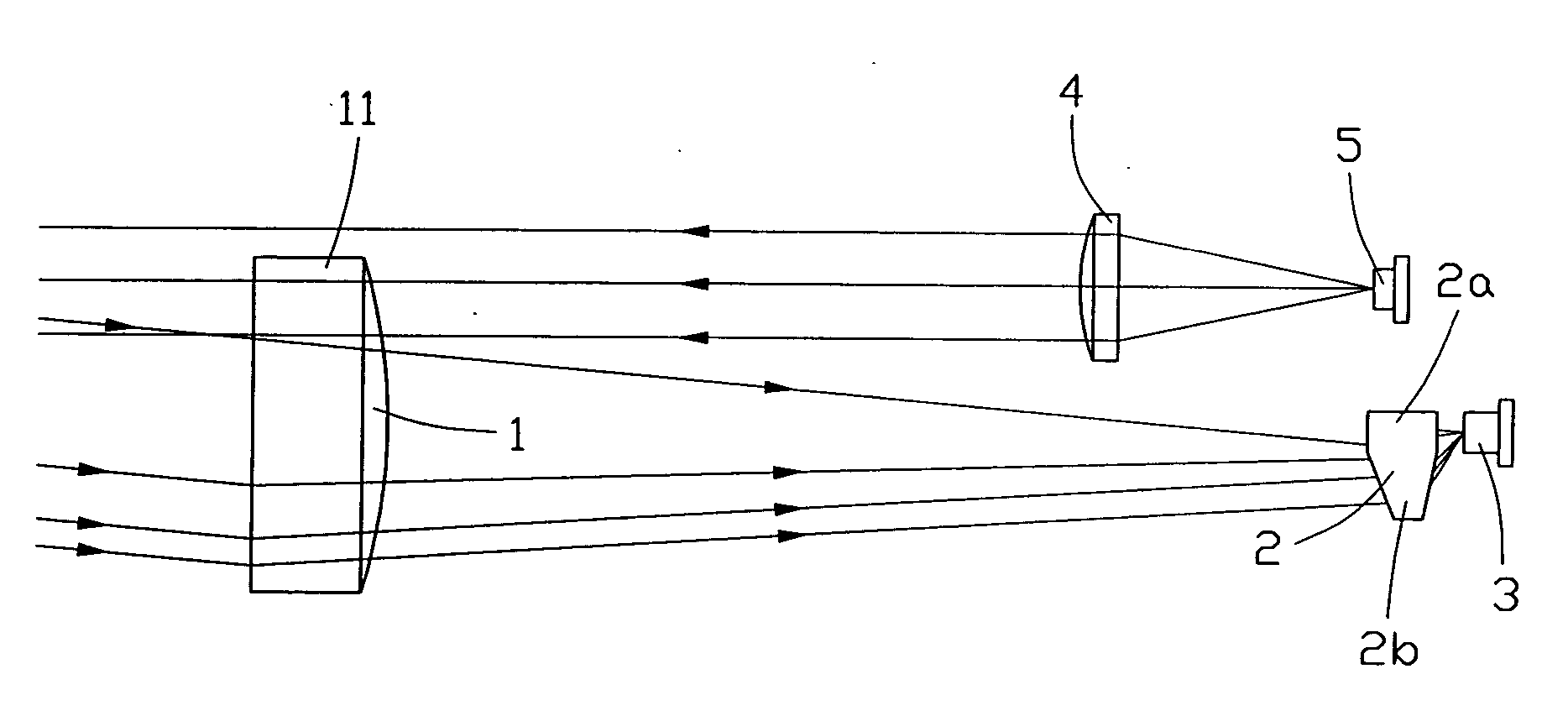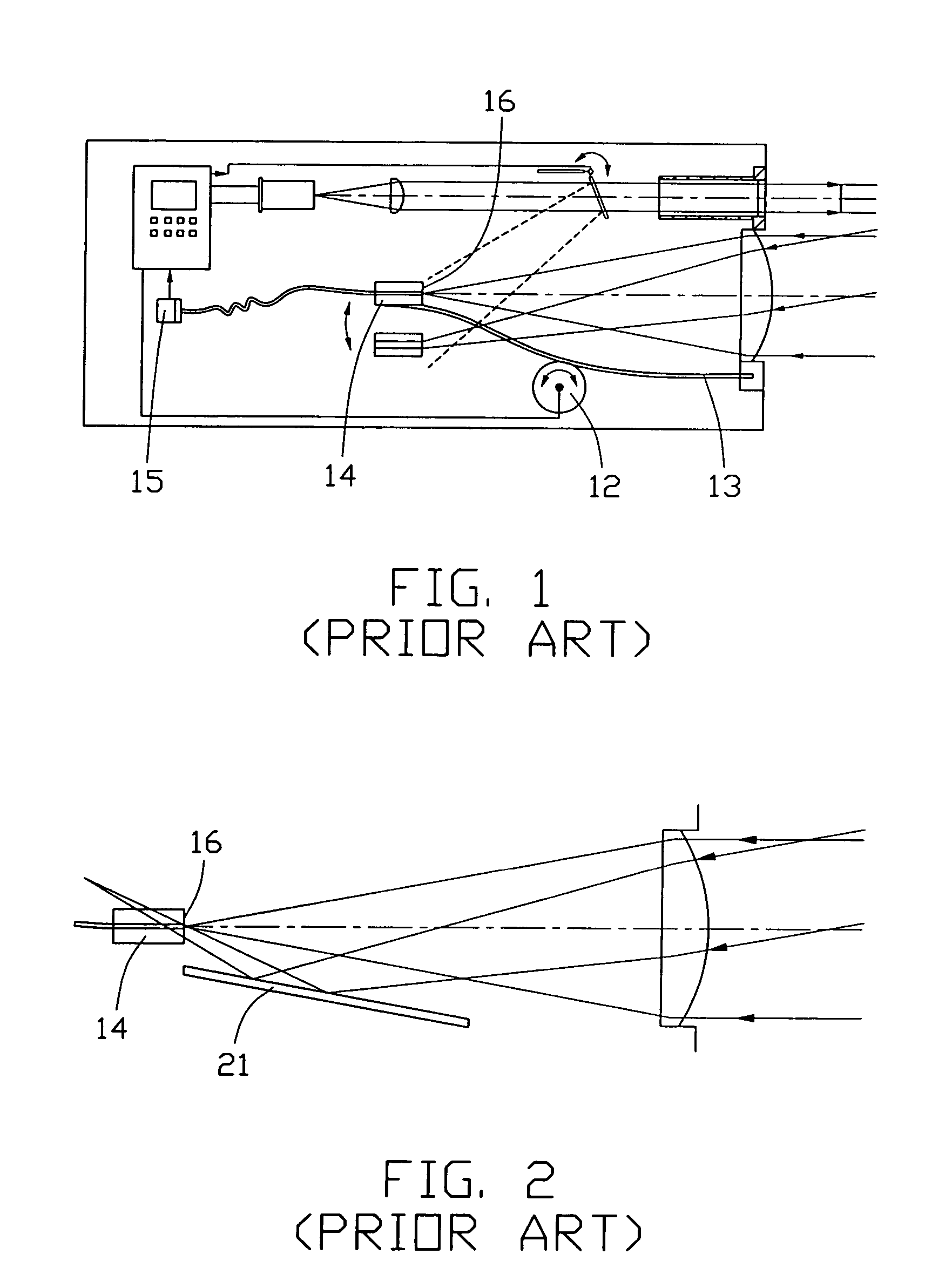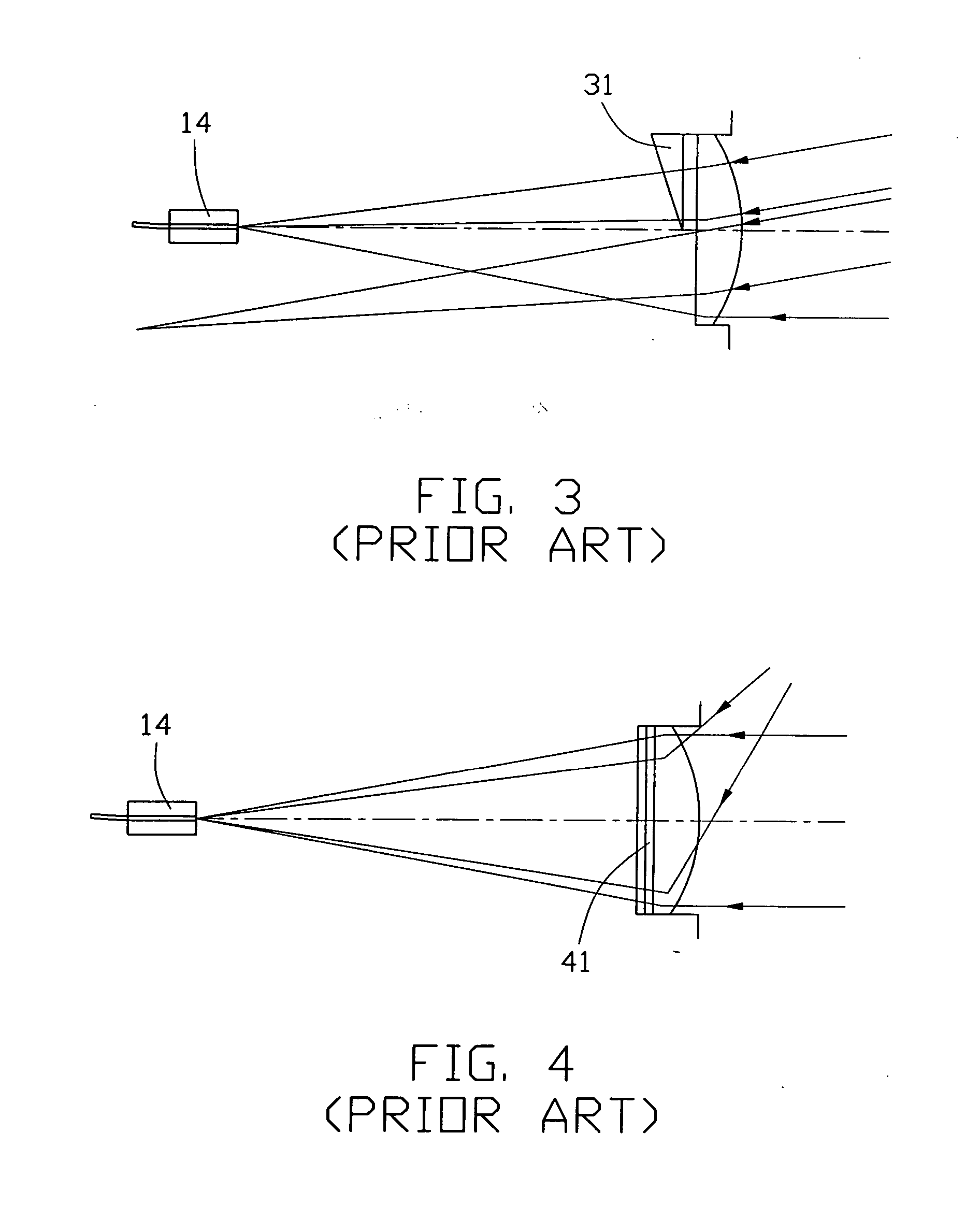Optical system for laser range finder
a laser range finder and optical system technology, applied in the field of laser range finders, can solve the problems of affecting the measuring accuracy of the range finder, reducing the signal-to-noise ratio, increasing the cost and hurting the eye of the operator, and achieving the effect of improving the efficiency of light energy utilization, avoiding interference between the emitted and received light beams, and uniform optical signal carriers
- Summary
- Abstract
- Description
- Claims
- Application Information
AI Technical Summary
Benefits of technology
Problems solved by technology
Method used
Image
Examples
Embodiment Construction
[0028] Referring to FIG. 5, an optical system for a laser ranger finder in accordance with the present invention consists of a light receiving aspheric lens 1, a polygonal prism 2, an optical receiver 3 (preferably an APD), a collimating lens 4 and a laser emitter 5 (preferably a laser diode (LD)). The laser emitter 5 functions as a light source to generate and emit laser light pulses. The emitted laser light beam is emitted through a collimating lens 4 arranged in front of the laser emitter 5 in the direction of the optical axis of the collimating lens 4 as a parallel light beam. The parallel light beam is directed to a target object (not shown) to be measured. When applicable, the target object may be positioned on an auxiliary cooperative target, such as a surveyor's pole, at the same distance. The auxiliary cooperative target helps to reflect the laser light beam more effectively, which allows the optical receiver 3 to generate an electric signal with increased ratio of signal t...
PUM
 Login to View More
Login to View More Abstract
Description
Claims
Application Information
 Login to View More
Login to View More - R&D
- Intellectual Property
- Life Sciences
- Materials
- Tech Scout
- Unparalleled Data Quality
- Higher Quality Content
- 60% Fewer Hallucinations
Browse by: Latest US Patents, China's latest patents, Technical Efficacy Thesaurus, Application Domain, Technology Topic, Popular Technical Reports.
© 2025 PatSnap. All rights reserved.Legal|Privacy policy|Modern Slavery Act Transparency Statement|Sitemap|About US| Contact US: help@patsnap.com



